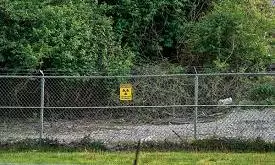
WWII-era nuclear waste contaminates US lake's Groundwater, prompts investigation
text_fieldsThe West Lake Landfill in St. Louis County, known for its contamination by nuclear waste dating back to World War II, has recently been found to have affected nearby groundwater, leading to a U.S. Environmental Protection Agency (EPA) investigation.
According to a report in Missouri Independent, during the cleanup efforts at the West Lake Landfill, crews detected radium contamination in the groundwater around the site. In response, the EPA has announced plans to install additional groundwater monitoring wells to assess the extent of the contamination and its potential migration towards the Missouri River.
The landfill, located in Bridgeton, about a mile from the river, has radium levels slightly above the limits for drinking water, though radium is naturally found in rock formations and aquifers.
The EPA had initially aimed to complete the installation of all necessary groundwater wells by August 2022, but detections of offsite contamination have necessitated an expansion of the monitoring network. Project manager Snehal Bhagat explained that more wells are being installed as they trace the contamination's boundaries.
The West Lake Landfill is among several sites in the area contaminated by nuclear waste from the 1940s. St. Louis played a critical role in the development of the world's first atomic bomb during World War II. Uranium used in Manhattan Project experiments in Chicago was transported to St. Louis, where radioactive waste was often spilled from trucks and dumped unprotected near Coldwater Creek. This creek, now running through suburban areas, became heavily contaminated, increasing cancer risks for generations of children who played nearby.
The waste, initially stored at the St. Louis airport, was later moved to a property in Hazelwood, also near the creek. In the early 1970s, after valuable metals were extracted, the remaining waste was illegally dumped at the West Lake Landfill, where it remains today. The landfill is now a Superfund site undergoing EPA cleanup.
Recent findings have shown that the contamination is more widespread than previously believed. Despite community concerns, the EPA relied on outdated radiation readings to locate the waste.
The agency is currently working to determine the "size and mobility of the plume," with data collection ongoing. "No conclusions have been made about the source(s) of the radium in off-site groundwater because data collection is ongoing," Kellen Ashford, an EPA regional office spokesman, told Missouri Independent.























